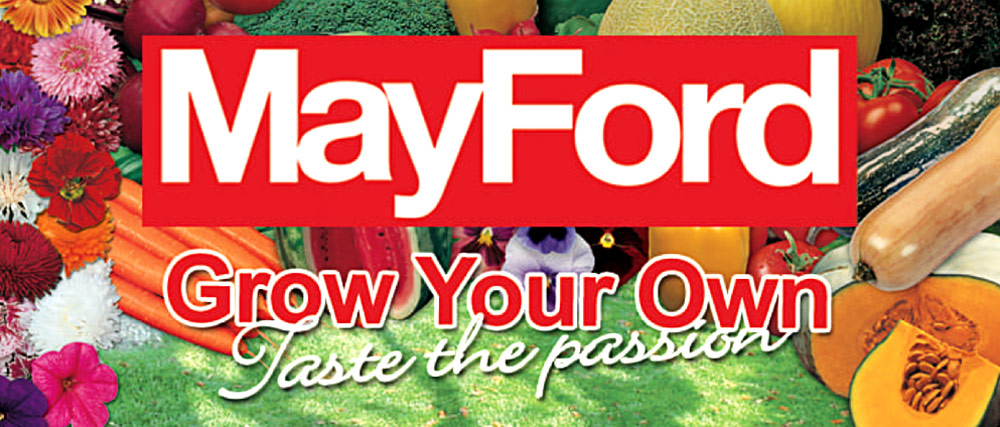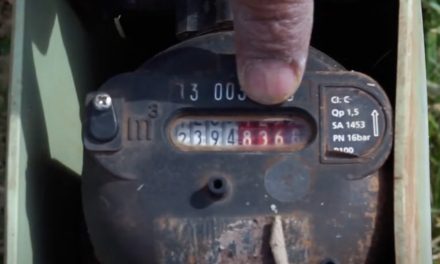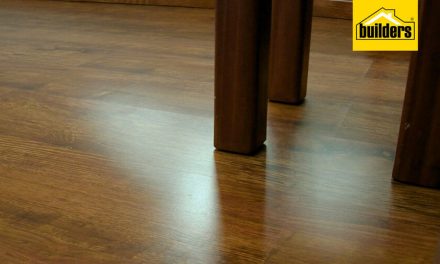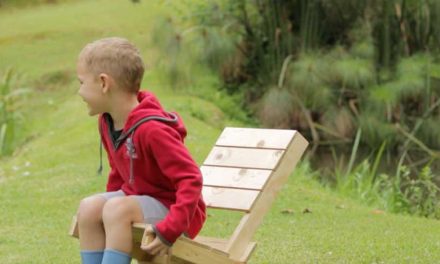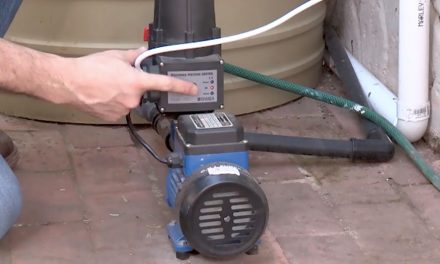Start your own organic vegetable garden.
Many urbanites will turn up their noses if you dish up the traditional toasted cheese, tomato and onion sandwich at a braai. They’ll want loads of fresh veggies as a side dish with their steaks and chops.
If you can supply a few spacious containers close to the braai, and the vegetables get enough sunlight, water and nutrients, there’s no reason why you can’t treat yourself to home-grown edibles that are crunchy fresh and in season.
Advantages
- You can eat organic food for less money.
- You can add another dimension to your time spent outdoors while braaiing with a new hobby that will also reduce your stress and tension levels, and which will give you great bragging rights as well.
- You can reduce waste, as you pick only what you need and there is no packaging to dump.
Action 1: Nursery grown edibles in containers, which will be ready for harvesting before you’ve even taken them out of your car’s boot, are a modern trend to help small-space gardeners to get started. They include chillies, cherry tomatoes and loose-leaf lettuce varieties. Visit your local nursery to take advantage of these time-saving goodies that will supply you with fresh salad, or sauce and marinade ingredients pronto!
Action 2: The seedling tables at nurseries are another source of ready to plant vegetables. They sell a wide range of healthy summer vegetable seedlings in trays that you can bring home to plant and pamper.
Action 3: Sowing seeds needs more patience and time, but if you can master this you can have access to very exotic heirloom and open-pollinated veggies, and can run a continuous production line on a small scale if you keep sowing small amounts of seed regularly.

3 ways to fast-track your veggie harvest
- If you’re still a rookie at veggie growing but are keen to give it a try, don’t fall into the trap of trying to grow everything you can think of immediately! Make a concise list of what you would like to grow and eat fresh, and stick to it before moving on to more exotic stuff.
- You don’t need expensive containers. Ordinary plastic or clay pots of about 35cm in diameter or with a 20L volume will suffice for most crops, while window boxes work well for dainty edibles like radishes, chives and lettuce.
- Good soil is an important factor when growing in pots, so don’t take a shortcut by simply digging up garden soil from your grandma’s garden – it might be poor in nutrients, infected by soil pathogens and weeds, and bad-draining to boot – all are problems that will affect container-grown veggies! Buy good-quality potting soil from a reputable supplier.

Soup up your soil medium
Commercial potting soil is expensive, but can be ‘stretched’ by adding other goodies to make it more water-retentive, nutrient-rich, easy to work with and lighter, while also aiding drainage capabilities. Make up a 50:50 mix by adding fine compost, palm peat (available in compressed bricks that must be soaked first) and vermiculite to it. While preparing your medium, also add organic fertiliser formulated for vegetables, according to the instructions on the package. You’re then ready to fill up your containers.
Lekker summer vegetables to whet your appetite
We chose a collection of veggies to grow at home for salads, for stuffing with your favourite filling, or for just roasting on the fire drizzled with herbs and olive oil.
Tomatoes
Tomatoes are perfect vegetables for pots but need the sunniest space you can find. Most tomatoes (even the tumbling and compact varieties) require support with bamboo canes and string, which should be tied loosely around the stems to keep them in place. Be diligent with regular watering sessions, as the plants wilt easily especially when setting blossoms. Overwatering them to make up for earlier neglect will cause rot. Also don’t skimp on feeding them (with a high-potash fertiliser) when the fruits start forming.
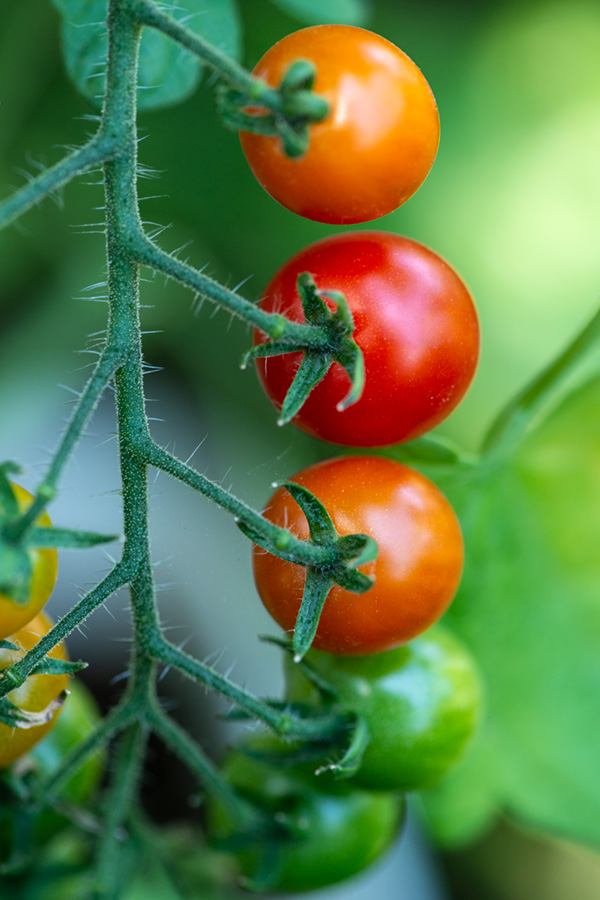
Mini beetroot
Mini beetroot seed can be sown directly into containers, and if you have done it too thickly you can harvest some of the small leaves to eat as microgreens. This creates space for the rest to grow into the dark root vegetables they are best known as. They need regular watering, but other than that can be left to their own devices as long as their spot in the container garden does not bake in hot sun, which might cause them to bolt. As soon as you see their little shoulders poking out of the soil, dig them up and eat them.

Peppers
Peppers include the sweetest of sweet peppers in green, yellow, orange and red, to the hottest of chillies, and need a warm and sheltered spot to grow in. The secret with peppers is to pick the first lot when they are still green, instead of allowing them to ripen on the plants, which prevents the growth of further fruit. Water and feed all peppers regularly and stake them lightly to prevent the stems from breaking under the weight of the fruit. Peppers like humidity in the atmosphere and are also susceptible to red spider mite in hot and dry conditions. Mist the plants frequently with a mist sprayer on hot days.

Carrots
Carrots must be sown very thinly in a deep container in light soil (change the recommended soil mix into one third potting soil, one third compost and one third vermiculite). Water sparingly once the seed has germinated and started to grow, to prevent the roots forking. (If you’re not sure if you should water, stick your finger in the ground and water only if it feels very dry.) Harvest only what you need to eat when you see shoulders popping out of the soil, leaving the rest underneath the ground for another day’s snacking.

Aubergines
Aubergines (eggplants) enjoy the same growing conditions as peppers, but take a little longer to fruit. Their pet hate is root disturbance, so be careful when planting nursery-grown seedlings. If you want to grow them from seed, use toilet rolls filled with seedling mix as ‘seed trays’ inside another pot. When ready to transplant, gently lift the seedlings and plant them, toilet roll and all, into their final growing pot.
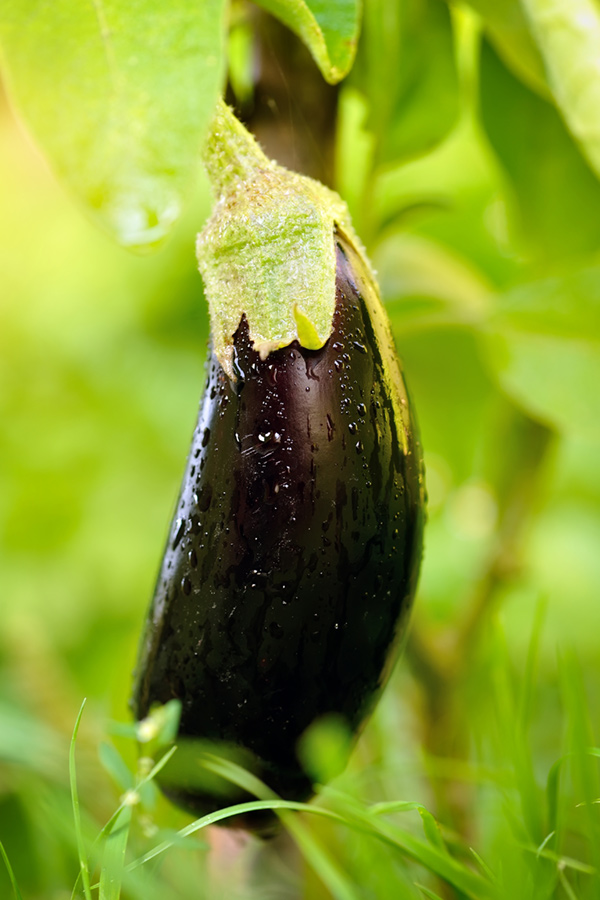
Runner beans
Runner beans are perfect for pots and are so easy to grow that you can simply plant two seeds side by side directly into a pot. Once germinated, remove the weaker one, leaving the stronger seedling to grow so tall that you will need a tepee stake made from bamboo to support the impressive plant. Water regularly when the flowers set to ensure a healthy crop of young bean pods, which must be picked frequently during the harvest season to ensure the production of more pods. If you feel sorry for your plants and leave pods on it to mature, they will simply think you are done with them and will stop producing. Pests to worry about are slugs and snails, which would love to eat the young seedlings as soon as they germinate, so pour your best beer in a saucer and place it as a trap between your seedlings. (They love beer and will drown in it.) Your other option is organic snail bait.

Zucchini (courgettes) and butternuts
For creepers with a difference, grow these tasty members of the pumpkin family in pots. You have to give them space to grow, and will have to stake them on a sturdy trellis. Butternut ‘Honeynut’ produces an abundance of small fruit (10 – 13 cm long) with a sweet, nutty taste. This patio variety’s leaves are resistant to powdery mildew (the bane of usual pumpkins). Plant it in full sun, water daily and fertilise twice a month. Plant only one plant per pot. Zucchini ‘Easy Pick’ produces golden-yellow fruit that must be picked when about 15cm long. Zucchinis like to be kept moist in morning sun and afternoon shade, and love to be fertilised when the fruits are swelling.

Top Tips
Veggies in general like moist soil, which means fast-drying containers must be watered every second day, and in hot summer weather even every day and preferably early morning.
- If watering with a hosepipe or watering can, fix a rose to it to stop soil compaction. It’s also better to water at root level and not across the whole plant, as wet leaves can cause disease.
- Good drainage is a must to allow excess water to drain away. Check that whatever container is used has proper (and unblocked) drainage holes.
- Sunlight is important to produce a good crop. If you can manage morning sun and afternoon shade for summer crops it would be ideal.
- Veggies in pots are totally dependent on you to feed them before they are going to feed you. As a general rule, fertilise them every two weeks with an organic liquid fertiliser mixed at half strength.
- Space your pots to allow for good air circulation between them as stuffy air and plants growing too close together can invite pests such as whitefly and aphid infestation.
- Should you notice any insect infestation that you cannot curb with a strong jet of water, treat it swiftly with the organic mixtures available for this purpose.


